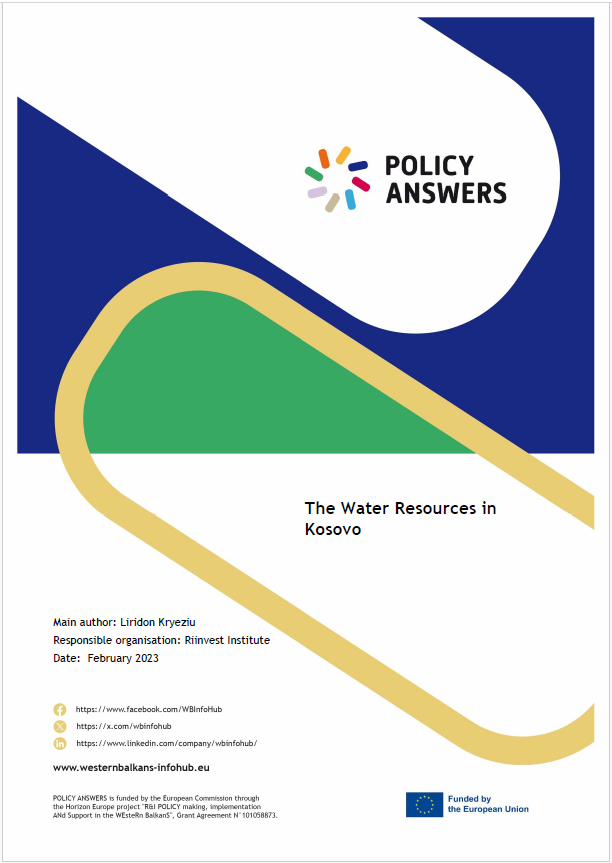This POLICY ANSWERS Brief was prepared in February 2023 by Liridon Kryeziu and published by the Riinvest Institute. Published by the Riinvest Institute. This document is part of the ‘Green Talks’ debate series within the Green Action Space platform, a joint initiative of the Riinvest Institute and the Kosovo Foundation for Open Society (KFOS). The content of this publication is the responsibility of the Riinvest Institute.
In the panel discussion on which this report is based, the focus was on the challenges that Kosovo faces regarding water resources in Kosovo and the potential measures that relevant institutions should take. The following were invited to participate in the panel: Ms. Fatlije Buza, representative from the Ministry of Environment, Spatial Planning and Infrastructure (MESPI), Mr. Baton Begolli, Advisor in the Interministerial Water Council (IWC), and Mr. Zeqir Veselaj, Professor at the Faculty of Education, University of Prishtina (UP).
In a time when the world is facing the growing consequences of global warming and the on-going trend of population growth at a global level, the expected decline of water resources by 20 percent until 2040 is becoming increasingly concerning. In the context of this global situation, the situation of water resources in Kosovo*1appears even more alarming, given the fact that it is the driest country in Europe in terms of water resources2. Kosovo has about 16 percent of the average availability of water per capita per year compared to the Western Balkans region. In Kosovo, 42 percent less rainfall is accumulated compared to the average of the countries in the Western Balkans region.
Kosovo, according to estimates, is listed among the countries at risk of water stress, meaning a shortage of water when citizens need it most, particularly during summer periods, especially in the eastern and north-eastern parts of the country. Our country is also a transit country for water resources, where waters pass through Kosovo and flow into three different seas: the Black Sea through the territory of Serbia, the Adriatic Sea through the territory of Albania, and the Aegean Sea through the territory of North Macedonia. According to estimates, only ten percent of these waters remain in Kosovo.
As a factor that has influenced this situation is the transit character of water resources in Kosovo, as well as the poor maintenance and damage of surface waters, stagnation with investment in groundwater, and decades-long lack of investment in water accumulations and reservoirs. The artificial water reservoirs in which Kosovo invested heavily in the years 1960-1985, such as: Ujmani, Batllava, Badovci, and Radoniqi, with a total capacity of 563.6 million m3, when compared to the European or regional average, reflect the fact that water availability is one of the primary limiting factors for Kosovo’s long-term development.
Therefore, considering the challenges that Kosovo faces in the context of water resources, as part of regular advocacy activities, Riinvest Institute, through the Green Action Space platform, organized a panel discussion at the end of January, which addressed in-depth the water resources in Kosovo and the challenges and opportunities that Kosovo has. This document summarises some of the key issues addressed in this discussion.
The report outlines challenges and opportunities for development and concludes with recommendations.

